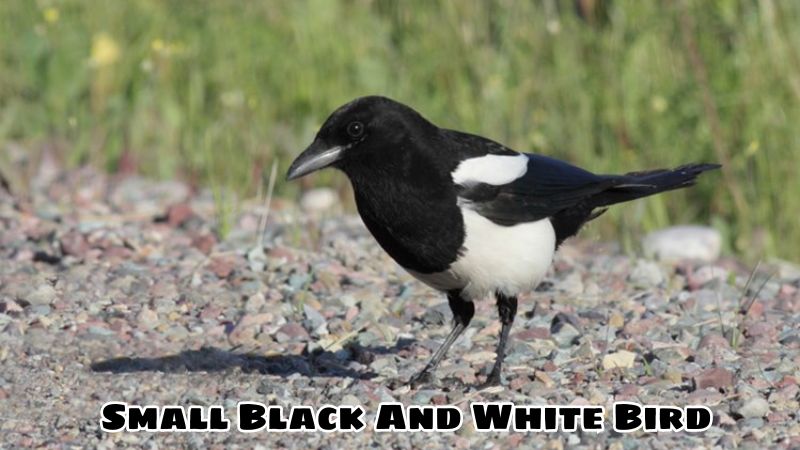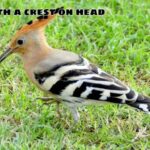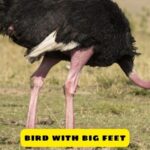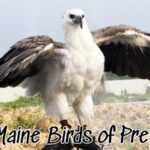Small black and white birds attract attention because of the strong contrast between the two beautiful colors of their plumage. These birds, from the pretty little larks to the taller birds with their striking white feathers, have their own appeal in the natural world. With the deftness of their beggars and the delicate lines of their plumage, they are not only a highlight of the landscape but also a symbol of our planet’s biodiversity. Let’s explore with Exoticbirdscorner about this small black and white bird!
Introduction to small black and white bird
In the colorful picture of nature, small birds with black and white feathers always attract attention because of their delicate and unique appearance. They represent an incredible diversity and richness in the bird world, with countless species with distinct characteristics and behaviors.
From tiny sparrows with jet black feathers dotted with pure white patches on their chests, to elegant kingfishers with jet black feathers and long white tails, or swallows flying in the sky With black and white feathers, each bird has a unique beauty.
The appearance of small black and white birds not only beautifies nature more vividly but also plays an important role in the ecosystem and natural habitat. They are important links in the food chain, helping to control the number of insects and pests, contributing to protecting crops and balancing the ecosystem.
Besides, small black and white birds also bring people joy and relaxation. Their chirping sounds are like melodious music, helping to dispel the troubles in life.
The presence of small black and white birds is testament to the diversity and richness of nature. They are an endless source of inspiration for art and literature, and are a reminder to people of the importance of protecting the living environment.
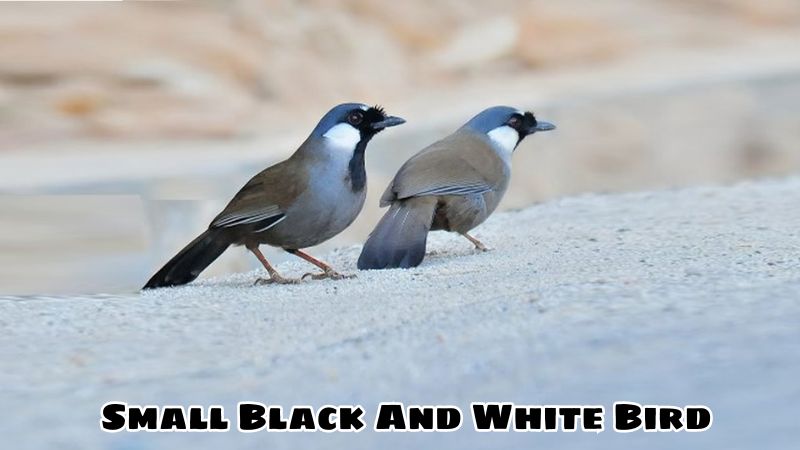
Common small black and white birds
Colorful nature always contains miracles, and the world of small birds with black and white feathers is a testament to that. Here are some common small black and white birds with unique characteristics and habitats:
1. Black-throated Sparrow:
- Characteristics: Small with jet black fur on the neck and chest, the rest is mainly gray brown. Short black beak, pink feet.
- Distribution: Common in North America, Mexico and some areas in Central America.
2. Black-capped Chickadee:
- Characteristics: Small size, jet black head, white cheeks, gray body. Short black beak, black legs.
- Distribution: Common in North America and some areas in Northeast Asia.
3. Pied Flycatcher:
- Characteristics: Medium size, white on the chest and belly, the rest is mostly black. Long black beak, black legs.
- Distribution: Widely spread throughout Europe, Asia and North Africa.
4. White-crowned Sparrow:
- Characteristics: Medium size, black head with large white patch on top of head, gray-brown body. Short black beak, brown legs.
- Distribution: Common in North America and some areas of Northeast Asia.
These are just a few small examples of the countless small black and white birds in the world. Each species has a unique beauty, contributing to making the natural picture more vivid and colorful. Learning about these little birds not only helps us understand more about the natural world but also arouses our passion for discovery and love for all kinds of birds.
Biological and behavioral characteristics of small black and white birds
The diversity of small black and white birds is reflected not only in appearance but also in unique biological and behavioral characteristics. Each species of bird has its own ways of adapting to its living environment, from how to feed and reproduce to how to rest and interact with each other.
Food
Insect-eating birds such as black-headed warblers often forage in tree canopies, using sharp beaks to catch small insects. Black-necked sparrows prefer seeds, often foraging on the ground or in bushes. Black-tailed hummingbirds, with their long beaks and narrow throats, specialize in catching flying insects in the air.
Breeding
The breeding season of small black-and-white birds usually takes place in spring and summer. They often build nests on tree branches, in tree hollows or on roofs. Male birds often chirp to attract female birds and together build nests, incubate eggs and take care of young birds.
Rest
When night falls, small black and white birds often look for a safe shelter to rest. They can sleep on tree branches, in nests or in rock cavities.
Interaction
Small black and white birds often live in flocks, helping each other in foraging, protecting nests and territories. They communicate with each other by singing, calling and body gestures. Some birds also have the ability to imitate the songs of other birds or even human voices.
The variety of behavior of small black and white birds is testament to the diversity and complexity of the natural world. Each behavior has its own meaning, helping them survive and develop in the living environment. Observing and learning about these behaviors helps us understand more about the lives of tiny birds and contributes to protecting their habitat.
Threats and conservation of small black and white birds
The existence of small black and white birds is facing many potential risks, making their conservation and preservation more urgent than ever.
- Habitat loss: Deforestation, urbanization and climate change are the main causes of loss of natural habitat for small black and white birds. As habitats shrink and fragment, birds no longer have enough space to feed, breed and shelter, leading to a significant decline in their numbers.
- Illegal hunting and trade: Small black-and-white birds are the hunting target of many poachers for ornamental purposes or for meat. Illegal bird trade also contributes to increasing the risk of extinction for these bird species.
- Pesticide use: Excessive use of pesticides in agriculture can harm birds by poisoning their food and water sources.
- Climate change: Climate change affects bird habitats, changes migration and breeding times, and increases the risk of disease spread.
- Recognizing these risks, many conservation efforts and recovery programs are being implemented to protect the little black-and-white birds.
- Habitat protection: Nature reserves were established to protect bird habitats. Tree planting and forest restoration programs are also implemented to expand living space for birds.
- Combating illegal hunting and trading: Stricter laws are in place to prohibit illegal hunting and trading of birds. Awareness campaigns are also conducted to educate the public about the importance of bird protection.
- Minimize pesticide use: Sustainable farming methods are encouraged to minimize pesticide use, protecting birds’ food and water sources.
- Research and monitoring: Scientific studies are carried out to collect information on the number, distribution and behavior of small black and white birds. Continuous monitoring helps monitor the status of bird populations and evaluate the effectiveness of conservation programs.
Protecting the little black and white birds is a shared responsibility of each individual and community. Joining hands to protect the living environment, fight against illegal hunting and trade, and raise awareness about the importance of nature conservation are practical actions to contribute to protecting biodiversity. learn and maintain the balance of the ecosystem.
Epilogue
The little black and white bird is not only an integral part of nature’s colors but also a symbol of sophistication and biodiversity. The harmony between the two colors seems simple but exudes their elegance and special vitality. The presence of these birds not only brings color to the natural world but is also a clear demonstration of the importance of protecting and maintaining their habitat.

